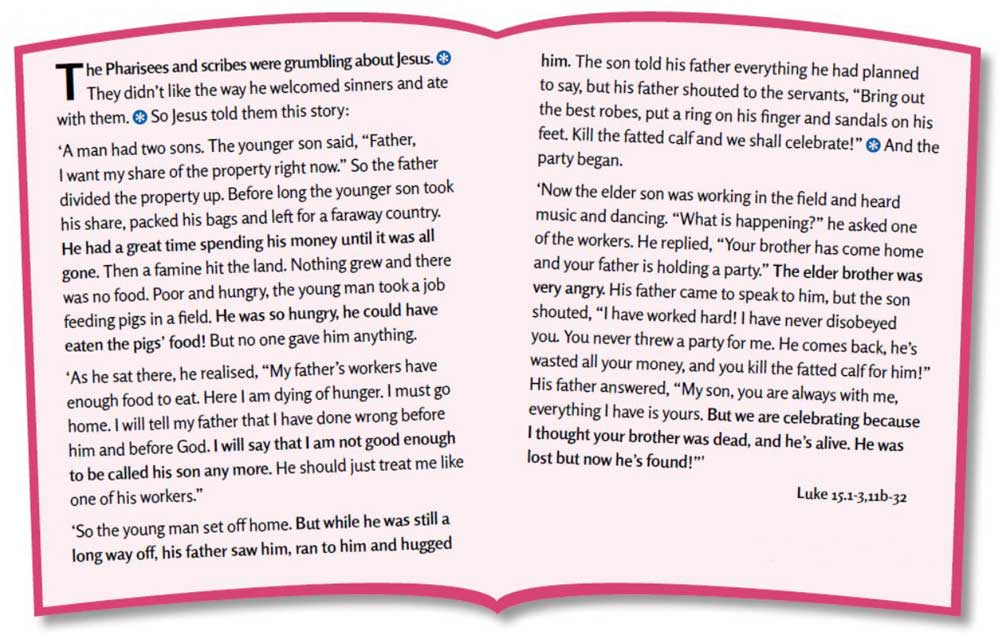Children & Youth
 Ways to present Luke 15.1-3,11b-32
Ways to present Luke 15.1-3,11b-32
Activities marked with an asterisk  next to the activity title are in addition to the resources in the Ready to go sessions. Suggested timings for these activities are also shown. NB The inclusion of additional activities varies from week to week.
next to the activity title are in addition to the resources in the Ready to go sessions. Suggested timings for these activities are also shown. NB The inclusion of additional activities varies from week to week.

 A version of the story for very young children
A version of the story for very young children
Invite the children to choose a puppet to tell the story: the man, the two sons, pigs.
Jesus told a story about a man who had two sons.
One day, the younger son asked his dad
to give him his share of money.
The young man took the money and left home.
He wasted all his money and had to get a job.
But the only job he could find was feeding pigs.
He was so hungry, he started eating the pig food!
He decided to go home and say sorry to his dad.
As soon as the dad saw his son, he rushed to him,
gave him beautiful gifts and held a party.
The older brother was jealous of the celebrations.
His dad explained that he was always with him,
but now they could celebrate
because the younger brother had returned home.
FOR CHILDREN
Read the story and pause at the  to share these points with the children (see Stop and share below). Then use the activity to explore the passage together. (10 mins)
to share these points with the children (see Stop and share below). Then use the activity to explore the passage together. (10 mins)

Click on the image to view a PDF.
 Stop and share
Stop and share
- The Pharisees were Jews who followed religious laws strictly and thought Jesus was not strict enough.
- Sin is a word to describe when we don’t live life as God intends.
- The fatted calf was the best thing on the farm the father could give his son.
Represent the emotions W E S
- Read the story. Pause every time you get to the end of one of the bold sections, and ask the children to mime and/or make a facial expression that they think best represents how the character was feeling at that moment in the story.
FOR YOUNG PEOPLE
People’s perspectives 10 mins W E S
 Play the track ‘The Prodigal Song’, Cory Asbury on To Love A Fool.
Play the track ‘The Prodigal Song’, Cory Asbury on To Love A Fool.- Split the group into three, representing the father, younger son and older son. Ask them to read the passage, reflecting on the events from their character’s perspective.
- Afterwards, encourage everyone to talk to each other in character, to find out why they feel and act as they do.
See less